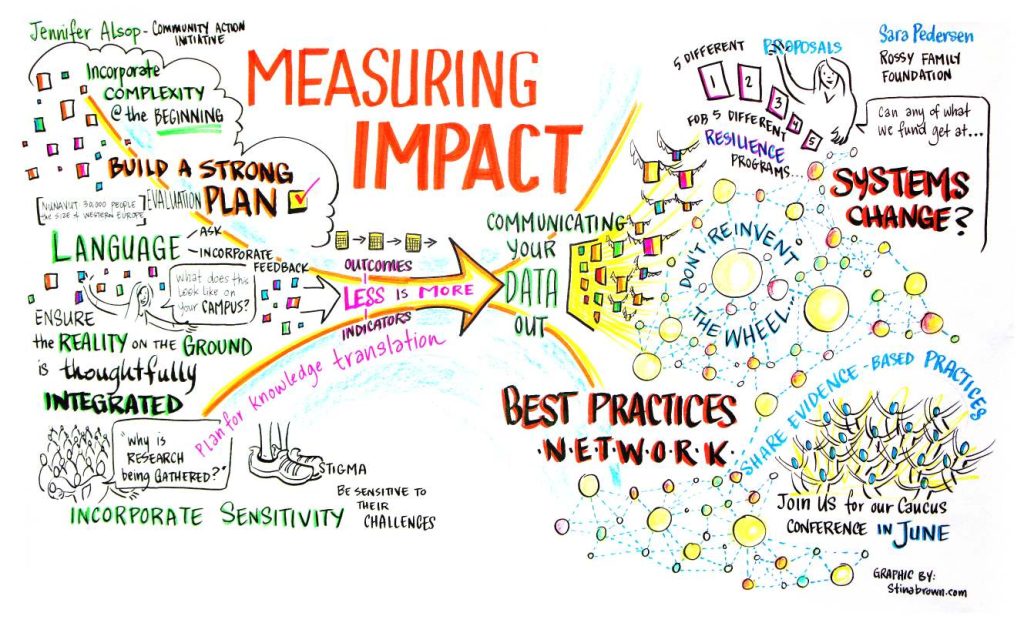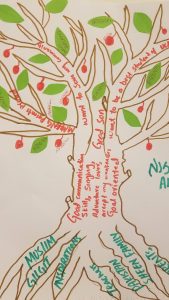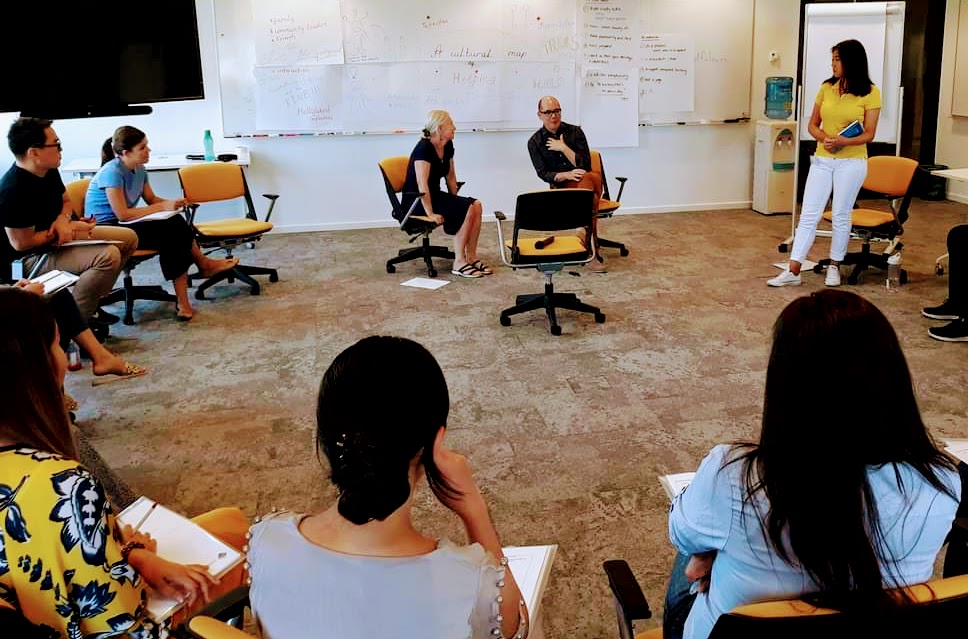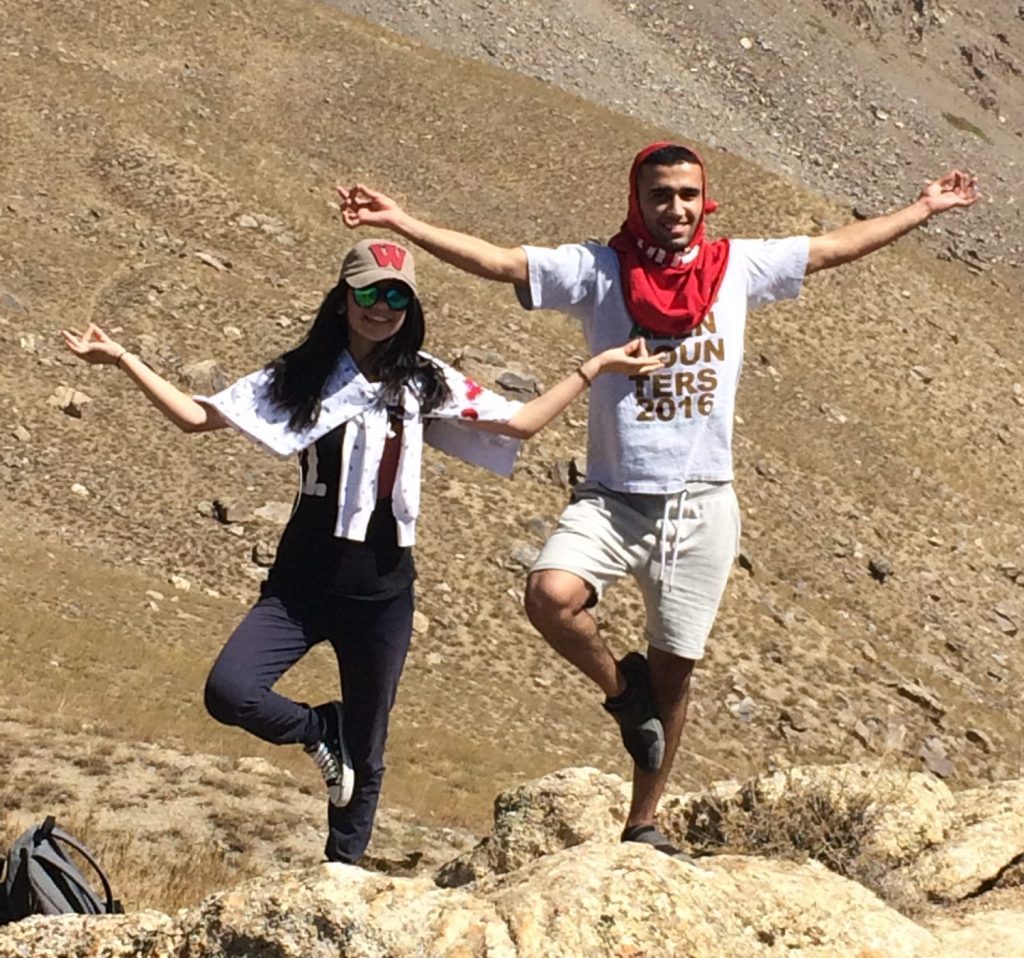Top Ten Hacks for Facilitating Groups

Facilitation is an intricate dance between preparation and adaptability, purpose and flexibility. In the dynamic environment of workshops and group discussions, facilitators must navigate a multitude of roles—guides, listeners, and creators of experiences that foster meaningful engagement. To achieve this, facilitators must approach their work with a clear sense of purpose, an arsenal of powerful questions, and the ability to read and respond to the ever-changing landscape of participant needs. – Art and Science of Facilitation
There are oodles of facilitation skills courses and resources out there in the world, so this list is just a superficial glance at the complex art of facilitating groups. I am hoping that if you are drawn to this book, it is because you have already had training and found mentors who have encouraged you to find your unique style for designing and hosting meaningful social emotional learning activities. If not, seek out a community of practice where you can experiment and get honest feedback on what is working and where you need further growth.
Here are a few of the principles that guide my facilitation process. Use them to springboard reflections about your own core values and ground rules.
1. Be overly prepared but willing to chuck the plan to follow the group’s needs
I always have a detailed lesson plan for classes and workshops. First, I write down the learning outcomes so I am clear what I hope participants will gain from the activity. Then, I design interactive experiences that engage learners to explore the skills and values that fulfill the student centered learning outcomes. However, I usually prepare more material than I ever end up using. If there is a juicy discussion where I can see that people are fully engaged and learning from each other, it is worth letting go of my plan.
2. Guide from the side
Years ago educators started to talk about shifting the paradigm from being a “sage on the stage, to a guide on the side.” This rang true to me as it comes from a core value of believing in people’s intrinsic wisdom. This educational philosophy recognizes that our main role as facilitators is just that – facilitating the emergence of ideas, emotions and group learning. In this internet era, information about most things is readily available. Thus, our role as “guides” is to create environments and activities that help people to integrate and apply knowledge, skills and attitudes in ways that are relevant to their lives.
Of course, there are still times when being a sage can be useful as you may have important information that can assist people in making good choices or share resources that point them towards research into topics that they find meaningful.
Here is an excerpt from an interesting blog post that analyzes the role of guides and sages.
In the end, the best path we can all follow as educators is to actively question how we interact with our students and what methods will serve them best in any given situation. The “sage on the stage” and “guide on the side” ideas may be clichés, but I think they’re still useful concepts to help us consider how we act in the classroom and how we can choose the appropriate approach in different circumstances. I plan to keep striving to be the best sage I can be and the best guide I can be — whether I’m on the stage, off to the side, or deep in the trenches with my students.
My hot take is if you are going to err – err on the side of guiding rather than sageing.
3. Surf the energy and mix it up
Part of the art of facilitating comes from being able to read the energy levels of both individuals and the group as a whole. I am a big fan of setting up my workshop space an hour ahead of time, so I have the tables and chairs organized appropriately for the particular learning activities I have planned. Because I never trust technology, I make sure I have checked the IT systems if I am using videos or powerpoint presentations. I also usually bring something from nature or something colourful to make the environment less institutional. By the time participants start arriving, I have organized and inhabited the space and I am ready to meet and greet each one as they enter.
Throughout the workshop, the facilitator’s antennaes are tuning into the engagement levels of the group and asking themselves the following questions: Is this a time for an energizer? Is the discussion shifting into a deeper sharing where the magic happens and we want to stay in that place longer than planned? Should we move everything outside for a bit to shift the energy and enliven the senses? Are some people disconnecting? Whose voices are being heard and whose might need encouragement? Are there conflicts or misunderstandings brewing? What questions might deepen understanding and connection? How do we summarize and reinforce themes and learning and create closure for this activity?
Some facilitation training programs emphasize that facilitators should have a totally neutral presence so that their opinions or personality do not influence participants. My own style of facilitating is to focus on the experiences and insights of participants, but to occasionally share anecdotes from my personal history that might be relevant to the topics being discussed. Occasional personal sharing can help participants to recognize that the facilitator is a human with vulnerabilities and flaws and can add energy and authenticity if the content is seeming too dry or abstract.
If “sitting is the new smoking,” it also seems particularly important to limit the amounts of time where people are simply stationary in chairs listening. Facilitation contains a mindboggling number of variables and finding the right mix of reflective and active content is a continual balancing act. Being exquisitely aware of dynamics and gently shaping the group energy is a kind of intuitive alchemy that deepens with experience.
4. Make it Visual
Words help us make sense of our realities, but unless they are written down or expressed through artistic mediums, meaning quickly evaporates. Whether it is capturing themes on old-school flip charts and white boards, or using online tools like padlet and mentimeter, adding a visual component helps reinforce material so that the brain is more likely to hold onto new insights and learning. Talented graphic facilitators are trained to capture themes from group dialogues and illustrate the the interconnections between ideas. When these recordings are posted throughout a learning event and then shared digitally afterwards, they keep the conversations and learning process going far beyond the original activity.

Similarly, when individuals capture their reflections through writing or art work, they have a physical product that reminds them of their experiences and the learning process can continue to percolate long past the workshop. In addition, artistic expression accesses different parts of our brain and sometimes new epiphanies and connections emerge through the process of making knowledge explicit through colour and form. One more benefit of embedding creative expression in learning activities, is that the meeting place becomes saturated with the personalities and insights of the participants. When I was involved in facilitating five-day summer institutes, I loved seeing how a room would change from being an institutional classroom to a vivid reflection of the lives of its learners.
physical product that reminds them of their experiences and the learning process can continue to percolate long past the workshop. In addition, artistic expression accesses different parts of our brain and sometimes new epiphanies and connections emerge through the process of making knowledge explicit through colour and form. One more benefit of embedding creative expression in learning activities, is that the meeting place becomes saturated with the personalities and insights of the participants. When I was involved in facilitating five-day summer institutes, I loved seeing how a room would change from being an institutional classroom to a vivid reflection of the lives of its learners.
5. Summaries and questions that deepen dialogue
Successful facilitation is dependent on creating environments where meaningful, respectful dialogues can flourish. Summarizing insights and themes helps participants to feel understood and builds connections between different points of view. Well-timed use of questions is another crucial skill in the facilitator’s tool box. Powerful questions deepen exploration of a topic and take participants to new frontiers of sharing and understanding themselves and each other:
Effective facilitation hinges on the art of asking the right questions, a skill that transforms ordinary meetings into dynamic sessions of discovery and insight. Strategic questioning is about guiding a group through a thought process, uncovering hidden perspectives, and fostering a deeper understanding of the subject at hand. A skilled facilitator knows that the quality of the questions asked directly influences the depth and breadth of group discussions. These questions act as catalysts, sparking curiosity and encouraging participants to think critically and creatively. As a result, sessions become more engaging and productive, leading to outcomes that are both insightful and actionable. The Art of Questioning
6. Jive with your co-facilitator

One of the joys and challenges of the facilitation world, is the flow you create with your co-facilitator. From the planning stages to implementation to debriefing, co-facilitation requires extremely clear communication and willingness from both people to bob and weave and continually adjust.
In my experience, having a clear plan is even more important when you are co-facilitating, as it is more complicated to make changes when two people are involved in the process. It helps to have delineated roles ahead of time. Most often this involves facilitators alternating taking a lead role. When one person is doing the speaking part of the facilitation process, the other is often spending time observing the participants and noticing how they are reacting to the material or activity. Sometimes co-facilitators may need to discuss the timing or changes in the program in front of the group, or they may call a break so there can be a chance to recalibrate and plan together how to adapt to new circumstances.
7. Managing the challenging ones
All educators and facilitators will at some point experience group members who are disruptive or disengaged. Managing these situations is crucial to the overall cohesion of the group. Ignoring disruptive behaviors does not usually work. Sometimes it is possible to block someone who is dominating the discussion by gently re-directing and inviting other people into the conversation. At other times it may be necessary to have a private discussion with the participant in which you share your observations and attempt to recruit the participant to help you include all voices in the discussions.
Here is a reflection from a leadership trainer that aligns with my experience:
It’s easy to judge what looks like “disruptive” behavior, but a skilled facilitator will realize there may be something lurking beneath the surface. Avoidance, disengagement, interruption, etc. could be symptoms of feeling unheard, excluded, or having a dissenting POV on what’s being discussed (and we actually want diversity of ideas). How engaged people feel will be a reflection of the environment you create and the mutual agreements that everyone established at the start. So before jumping to solutions, consider what might be going on that’s driving the perceived disruption. And if it turns out they’re just being an intentional nuisance, then having a private candid conversation about their impact would go a long way.
8. Harvest the insights: closure, ceremonies and celebrations.
Just as the opening atmosphere and checking-in phase of a learning event are important, it is also important to have some kind of ritual that closes the circle and allows people to absorb the learnings and move on to the next steps in their lives. For short classes or seminars, this might be as simple as bringing the group back together in a closing circle where people can share reflections and summarize the themes of the session. For more immersive training events, ceremonies that honour the contributions of each participant give a sense of completion and closure. When possible, ending a program by sharing food and dance creates a celebratory closure to the work the group has accomplished together.
I usually send a group e-mail after the participants have returned home. This message contains gratitude, some reflections on what we learned together, resource links for further learning and an evaluation feedback form.
9. Reflect. Debrief. Evaluate. Plan.
Sometimes when a session ends, it is challenging to find time to reflect on what has happened. Sit with your co-facilitator to discuss and jot down key takeaways from the activity.
Some questions to ponder:
- What went well? What did we notice in terms of group cohesion and bonding?
- Are there any participants we are worried about? What needs to be done to include them or check up on them?
- Were there aspects of the session that went off course or surprised us in positive or negative ways?
- What concepts or themes might need reinforcing if we meet again?
- How do we each feel about our roles in the facilitation process and how did we work together?
- If this is a group we will be seeing again, what are our next steps?
- What do we need to do to get ready for our next session?
- If this was the last time we will be with this group, what closure information or evaluation do we need to send to the participants?
10. Nurture your own wellbeing
Facilitating groups is often exciting and rewarding, but it can also be exhausting. There are often times when things go sideways and you are disappointed that the reality did not match your vision. Sometimes, even when things have gone beautifully, the facilitator is left drained, since it takes considerable vigilance and energy to nurture a group through transformational learning.

It is important that you find ways to fully rest and recharge after hosting learning events. Knowing yourself and what you need is key. For me it is often a walk in nature that helps me bring down my adrenalin levels from the exertion of holding space for others.
Reflection: What helps you to decompress after full-on times of facilitating? What feeds your soul? What habits do you need to commit to on a regular basis to feel energized and healthy? Who can you talk to if you have been personally triggered by content or participants?
Make a personal sustainability plan for your health and resilience:
To maintain your wellbeing as a facilitator you need to rest and recharge your physical, mental, and emotional energy. This can help you recover from the demands and stress of facilitation, as well as prevent fatigue, illness, and burnout. Resting and recharging can involve taking breaks, sleeping well, eating healthily, exercising regularly, and engaging in hobbies and interests. By resting and recharging, you can restore your vitality, creativity, and motivation as a facilitator.
